This was designated a grade II listed building in 1971, when it was described as a two-storey building of ‘cut flint’ with a ‘brick front under a slate roof’ … ‘built by order of town council in 1837, restored 1960’, with a ‘two-storey wing that runs down Well Street’. In 1837, the licensee was Frances Tyler. However, there must have been an earlier Red Lion, as Frances Tyler was also the licensee of the Red Lion in 1836, preceded by John Tyler in 1830 and Robert Manby in 1791.
A print and text about the Thomas Howard family business.
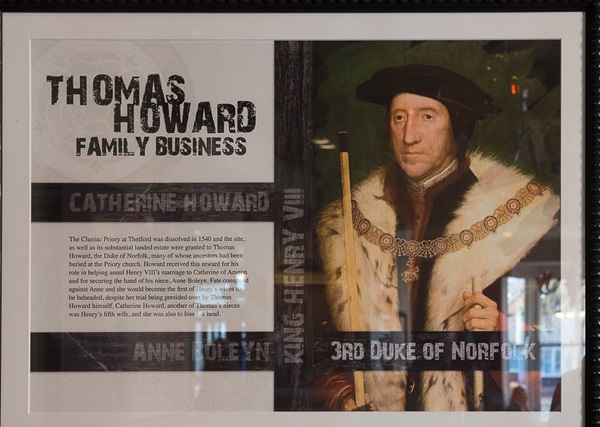
This text reads: The Cluniac Priory at Thetford was dissolved in 1540 and the site, as well as its substantial landed estate were granted to Thomas Howard, the Duke of Norfolk, many of whose ancestors had been buried at the Priory church. Howard received this reward for his role in helping annul Henry VIII’s marriage to Catherine of Aragon and for securing the hand of his niece, Anne Boleyn. Fate conspired against Anne and she would become the first of Henry’s wives to be beheaded, despite her trial being presided over by Thomas Howard himself. Catherine Howard, another of Thomas’s nieces was Henry’s fifth wife, and she was also to lose her head.
A photograph and text about the nunnery.
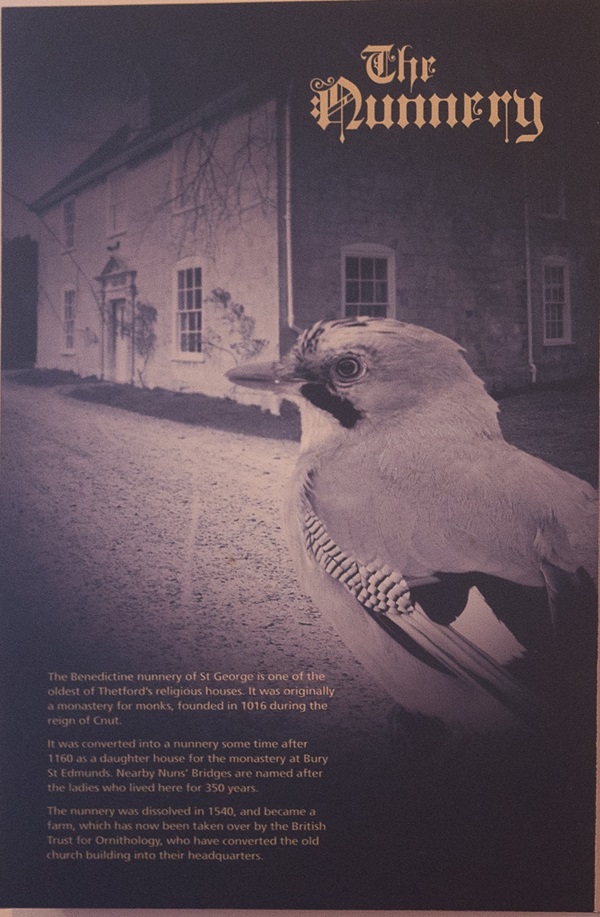
This text reads: The Benedictine nunnery of St George is one of the oldest of Thetford’s religious houses. It was originally a monastery for monks, founded in 1016 during the reign of Cnut.
It was converted into a nunnery sometime after 1160 as a daughter house for the monastery at Bury St Edmunds. Nearby Nuns’ Bridges are named after ladies who lived here for 350 years.
The nunnery was dissolved in 1540, and became a farm, which has now been taken over by the British Trust for Ornithology, who have converted the old church building into their headquarters.
A photograph and text about Thetford Castle Ground.
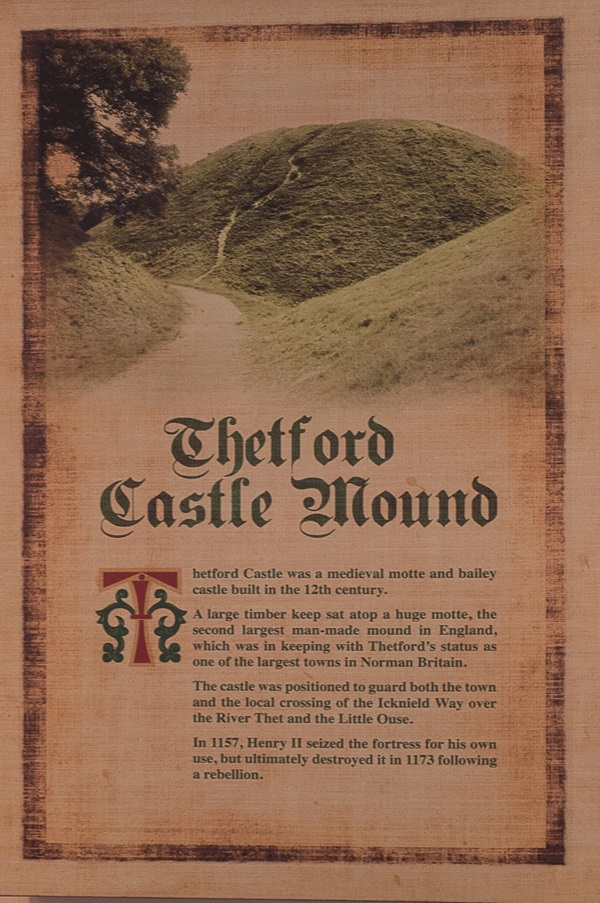
This text reads: Thetford Castle was a medieval motte and bailey castle built in the 12th century.
A large timber keep sat atop a huge motte, the second largest man-made mound in England, which was in keeping with Thetford’s status as one of the largest towns in Norman Britain.
The castle was positioned to guard both the town and the local crossing of the Icknield Way over the River Thet and the Little Ouse.
In 1157, Henry II seized the fortress for his own use, but ultimately destroyed it in 1173 following a rebellion.
A photograph and text about the Viking invasion.
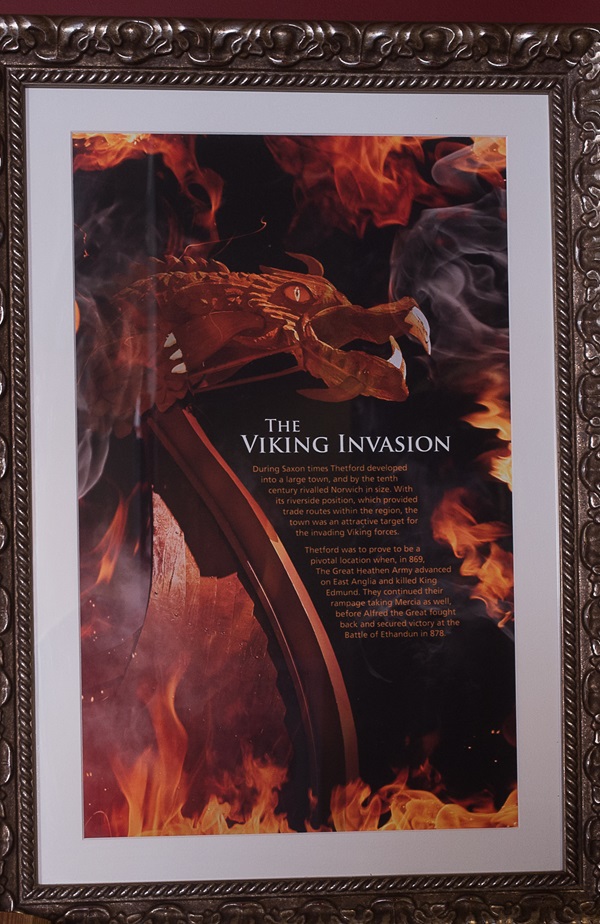
This text reads: During Saxon times Thetford developed into a large town, and by the tenth century rivalled Norwich in size. With its riverside position, which provided trade routes within the region, the town was an attractive target for the invading Viking forces.
Thetford was to prove to be a pivotal location when, in 869, The Great Heathen Army advanced on East Anglia and killed King Edmund. They continued their rampage taking Mercia as well, before Alfred the Great fought back and secured victory at the Battle of Ethandun in 878.
Photographs and text about Harry Bensley.
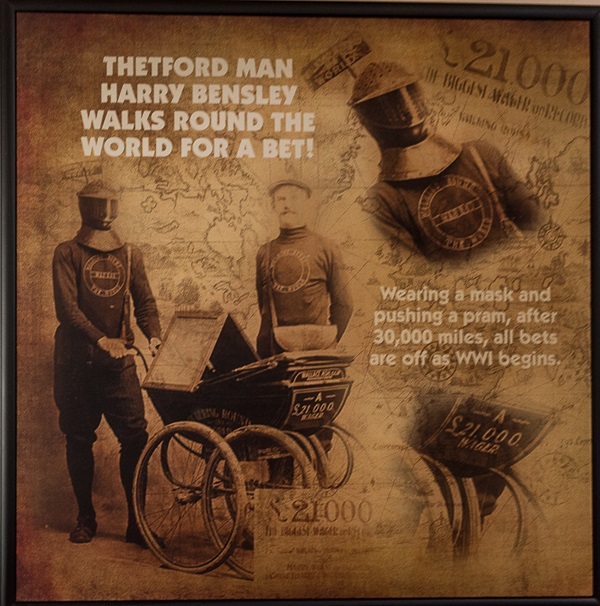
This text reads: Thetford man Harry Bensley walks round the world for a bet!
Wearing a mask and pushing a pram, after 30,000 miles, all bets are off as WW1 begins.
A photograph and text about Dad’s Army.
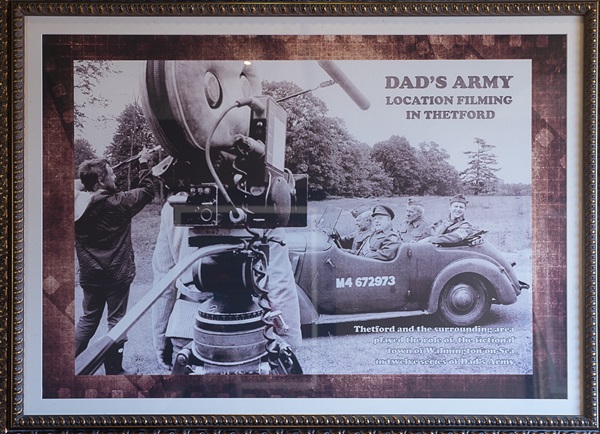
This Text Reads: Thetford and the surrounding area played the role of the fictional town of Walmington-on-Sea in twelve series of Dad’s Army.
A photograph and text about Nun’s Bridge.
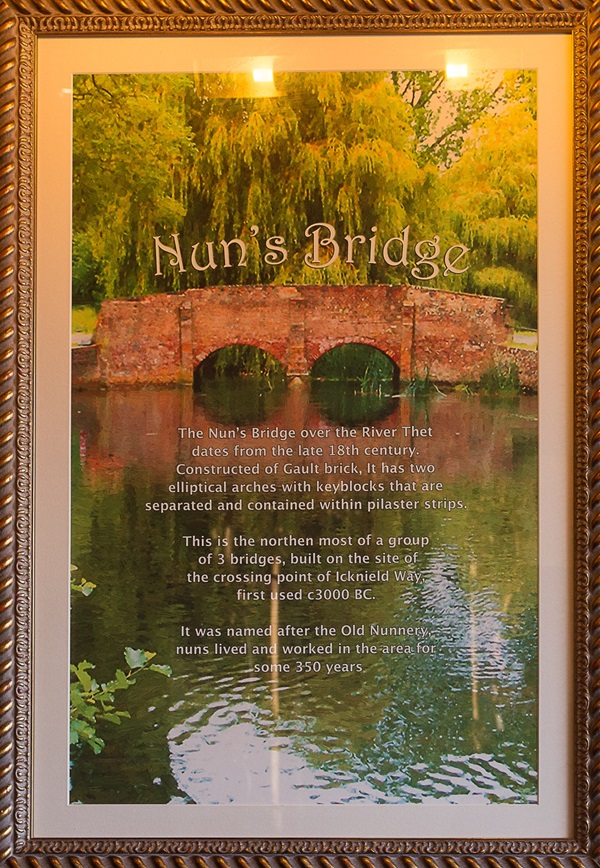
This text reads: The Nun’s Bridge over the River Thet dates from the late 18th century. Constructed of Gault brick, it has two elliptical arches with keyblocks that are separated and contained within pilaster strips.
This is the northern most of a group of 3 bridges, built on the site of the crossing point of Icknield Way, first used c3000 BC.
It was named after the Old Nunnery, nuns lived and worked in the area for some 350 years.
Photographs of old Thetford.
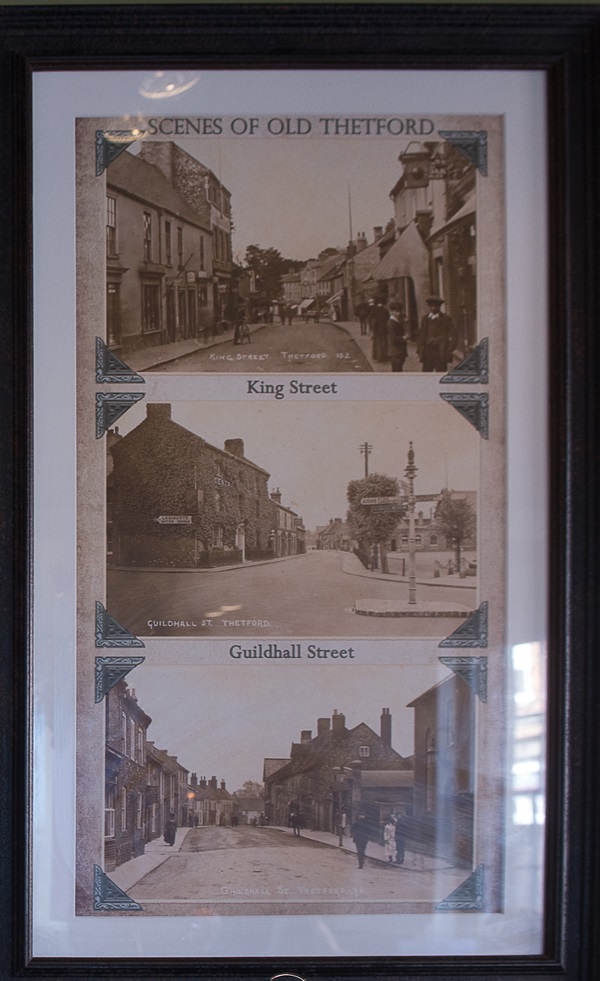
This text reads:
King Street Thetford. 152
Guildhall St. Thetford
Photographs of Kings House – former palace.
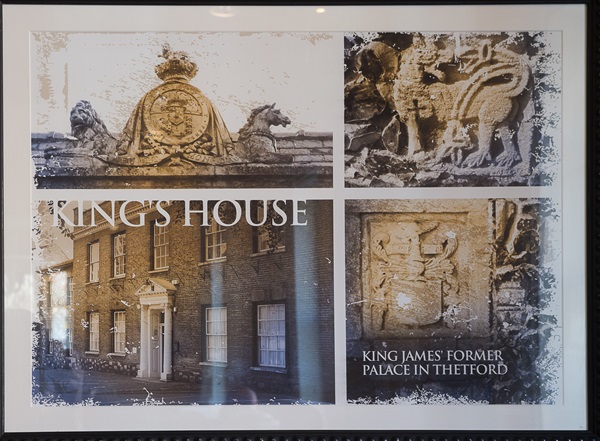
A watercolour painting entitled St Cuthbert’s Church, by Rosemarie Jacob.
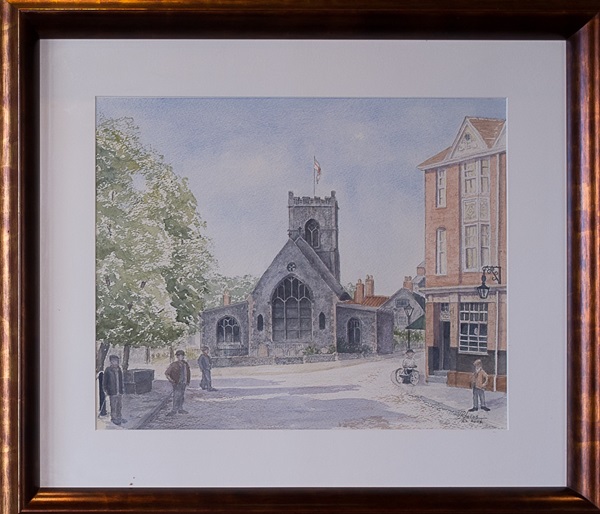
If you have information on the history of this pub, then we’d like you to share it with us. Please e-mail all information to: pubhistories@jdwetherspoon.co.uk